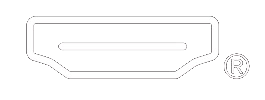Understanding HDMI® Technology Requires On-going Integrator Training

(published in CE Pro, July 2024)
New technology and product releases are released frequently, and it can be tough for integrators to keep abreast of how to design, buy and install the best solution for the customers.
Brad Bramy, HDMI Licensing Administrator, Inc. (HDMI LA) vice president of marketing and operations, asked David Meyer, technical consultant to CEDIA, about the importance for integrators to stay knowledgeable.
BB: Do the technologies encountered in designing and installing systems really change that much that training needs to be a constant activity?
DM: Most technologies tend to be evolutionary, no matter how small the changes are, and integrators really benefit from ongoing training. For example, when the HDMI® 2.1 Specification was first released, it paved the way for a whole new set of features and capabilities. When manufacturers started to implement these, it might have been one or two things, but as time’s gone by, they’ve grown the performance and features to implement more of the things that were laid out in the standard.
BB: Is it necessary to do a deep dive into how the technologies work or can just a basic understanding of how to install systems be sufficient?
DM: If you understand what a system is supposed to be doing, it’s easier to diagnose a problem if it appears to not be working. Keep in mind that most enthusiasts/DIYers have at least some basic understandings. Professional integrators should be setting a higher bar.
BB: What are some of the sources for training, there seems to be many organizations that conduct sessions at trade shows or online?
DM: There are many good sources of information, but I’d urge sticking with only highly credible sources. CEDIA is a leading example, developing course content with recognized subject matter experts, some of whom contribute to the very standards that govern our industry.
BB: Can integrators just do online training or reading? Are in-person sessions necessary?
DM: In-person training affords the opportunity to hear first-hand accounts and to ask questions of peers. Instructors and other attendees often share anecdotes and provide real-world examples with greater understanding, tips and tricks, etc. Some classes may have some hands-on elements to help too.
However, in-person training may not be easily available so my advice is to lay a foundation with self-paced online training and build upon that at in-person training events.
BB: Almost all system installations use multiple products with multiple specifications and technologies involved, how can an integrator understand all the interactions that take place?
DM: A well-trained integrator with a depth of knowledge and experience and a clever toolbox of tricks can turn those systems into something special. Higher performance, more and better functionality, better reliability, and most importantly, ease of use.
BB: Sometimes new products are incorporated into an existing legacy install, how can training explain all the ways to do that?
DM: I firmly believe that legacy technologies are in the DNA of new tech. For that, some select training and a network of peers can be a beneficial combination.
BB: What are the biggest dangers of not being fully knowledgeable and trained?
DM: The unreasonable amount of time that some integrators spend on troubleshooting, either towards the end of an install as things go awry during commissioning, or later in non-billable callbacks. Taking the time and making the investment to learn in the classroom and from peers is FAR cheaper and faster than learning the alternative way.
BB: Do you have any other advice for integrators to help improve overall systems integration?
DM: Yes, two things.
1. Design, install, verify. Far too many integrators skip the first and last step. As I’ve heard many a wise colleague say: “don’t design at the top of a ladder.” This can often lead to leaving some performance, features, reliability, or money on the table.
2. Access and use industry recommended practices wherever possible. Such documents are typically developed by a highly credentialled volunteer working group and are free to use! They generally cost next to nothing to implement into business practice but may be quite costly not to. A great example is CEDIA/CTA-RP28 HDMI System Design and Verification Recommended Practice. It’s free (from cedia.org) and steps through the principles of how to optimize and HDMI system from design to verification. It’s got lots of handy troubleshooting guidelines too.
The terms HDMI, HDMI High-Definition Multimedia Interface, HDMI Trade Dress and the HDMI Logos are trademarks or registered trademarks of HDMI Licensing Administrator, Inc.
- Valerie Robbins
- July 25 2024

